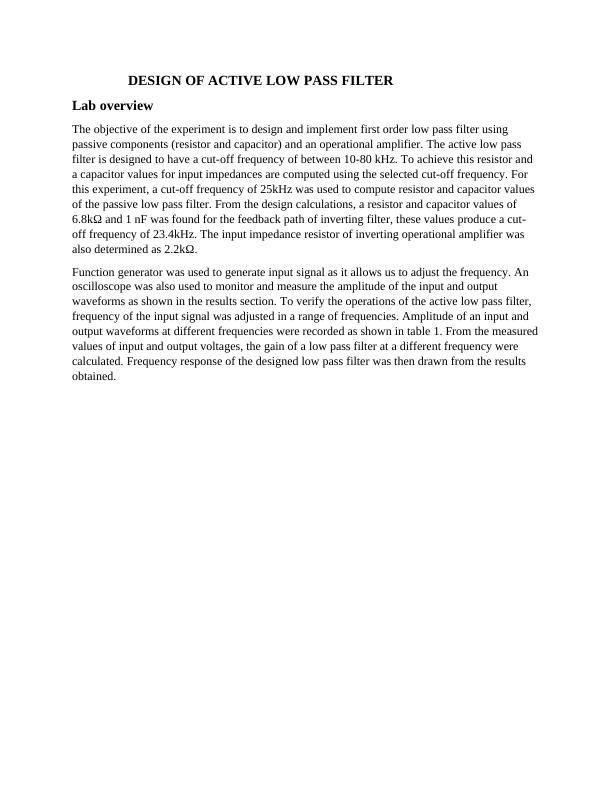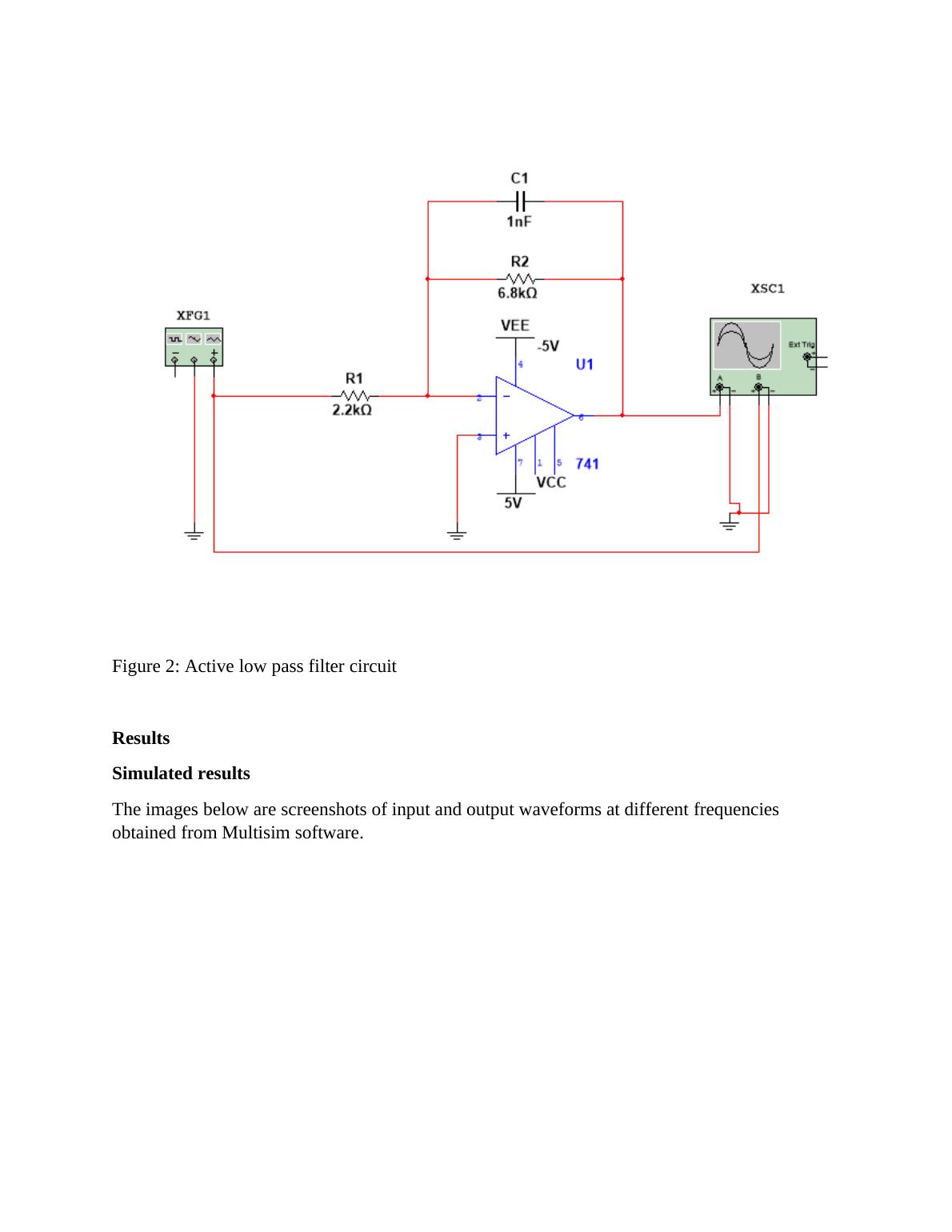Design of Active Low Pass Filter.
Write a full lab report (<2000 words) on the design and results of a low pass filter. The report should include practical exercises using a breadboard and simulation exercises using Multisim. It should cover the purpose and objectives of the lab, steps taken, results obtained, and a summary of the experience and learning outcomes.
Added on 2022-08-27
Design of Active Low Pass Filter.
Write a full lab report (<2000 words) on the design and results of a low pass filter. The report should include practical exercises using a breadboard and simulation exercises using Multisim. It should cover the purpose and objectives of the lab, steps taken, results obtained, and a summary of the experience and learning outcomes.
Added on 2022-08-27
End of preview
Want to access all the pages? Upload your documents or become a member.






